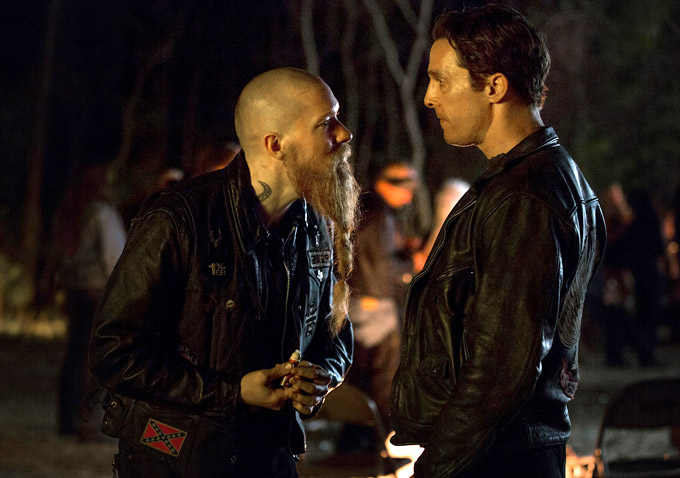
Firstly, if you’re not watching HBO‘s “True Detective,” you’re doing it wrong. One of the best things going on TV right now—if not the best, period—the drama series has proven to be fantastically written and richly entertaining, with a murder mystery woven across a couple of decades, in a case that continues to haunt the detectives played by Matthew McConaughey and Woody Harrelson. But this past weekend’s episode “Who Goes There” (full recap here) kicked things up a notch. *SPOILERS AHEAD*
You likely heard everyone talking about it already, and no doubt, the episode’s climactic, six-minute single take shot of the raid on a stash house is a phenomenal feat of filmmaking. Showy? Sure, but it was also a brilliant tool in terms of storytelling. The narrative in the show jumps back and forth through time, with cops Martin and Rust telling their tale in the present, that we see in flashback. And so, the decision to immerse the viewer in that moment, with the cops going “off book” and breaking every rule along the way, brings an immediacy to one of the most defining and dangerous moments in their investigation (so far).
But it was also a highly complex shot, with the action following McConaughey’s Rust through two homes, and through the streets of the ghetto, all as action takes place all around him, in the foreground and background, as the detective tries to find safety and bring his contact with him, after a robbery gone wrong. And to hear director Cary Joji Fukunaga describe it, the shot was pure choreography on a grand scale.
“We had ADs [assistant directors] all over the neighborhood because we had to release extras, crowd running background, police cars, stunt drivers. There were actual gun shots and stones being thrown through windows. There were a lot of things to put together,” he told MTV. “Even the action, the stunt sequences were complicated. We’re working on a television schedule. It isn’t like a film where you can spend a lot of time working the stunts out with the actors. We only had a day and a half to get Matthew and everyone else on the same page.”
The crew ran through the sequence a full seven times, and once it was in the can, Fukunaga completed a few different versions of the scene, with edit points in case he wanted to cut away to something else. But wisely, he kept the entire shot intact, but only because it worked so well. “The best ones, you don’t even realize that they’re oners,” Fukunaga explained. “They’re the most first-person experience you can get in a film.”
And I have to admit, the first time I saw the sequence I didn’t even realize it was a single take until it was over. And it was only a second viewing where I appreciated the tremendous technical accomplishment of the shot. So, why don’t you give it another whirl too? Watch the entire six-minute single take below.

